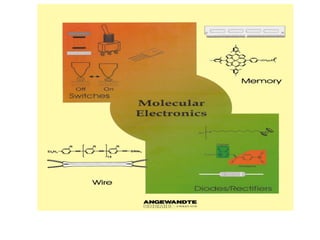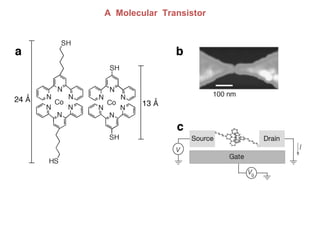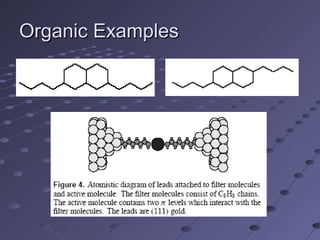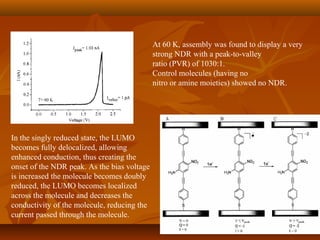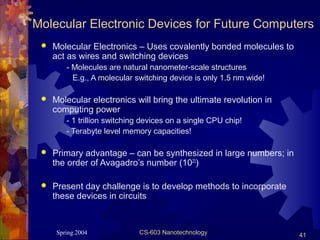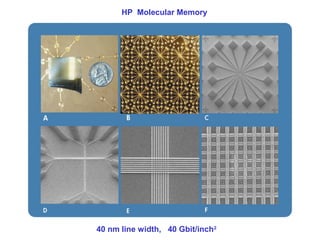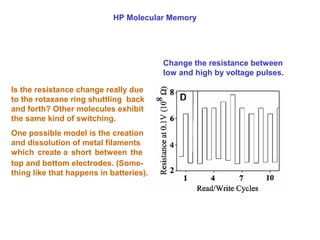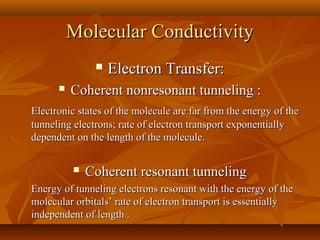This document discusses molecular electronics and nanoelectronics. It describes two approaches to developing nanoelectronic devices - continuing to scale down existing solid-state devices, or developing new devices using molecules (molecular electronics). Molecular electronics involves using organic or organometallic molecules as the basic electronic components, such as in molecular wires, diodes, transistors, and LEDs. Challenges in molecular electronics include making reliable electrical contacts to organic molecules and improving carrier mobility and material stability.
